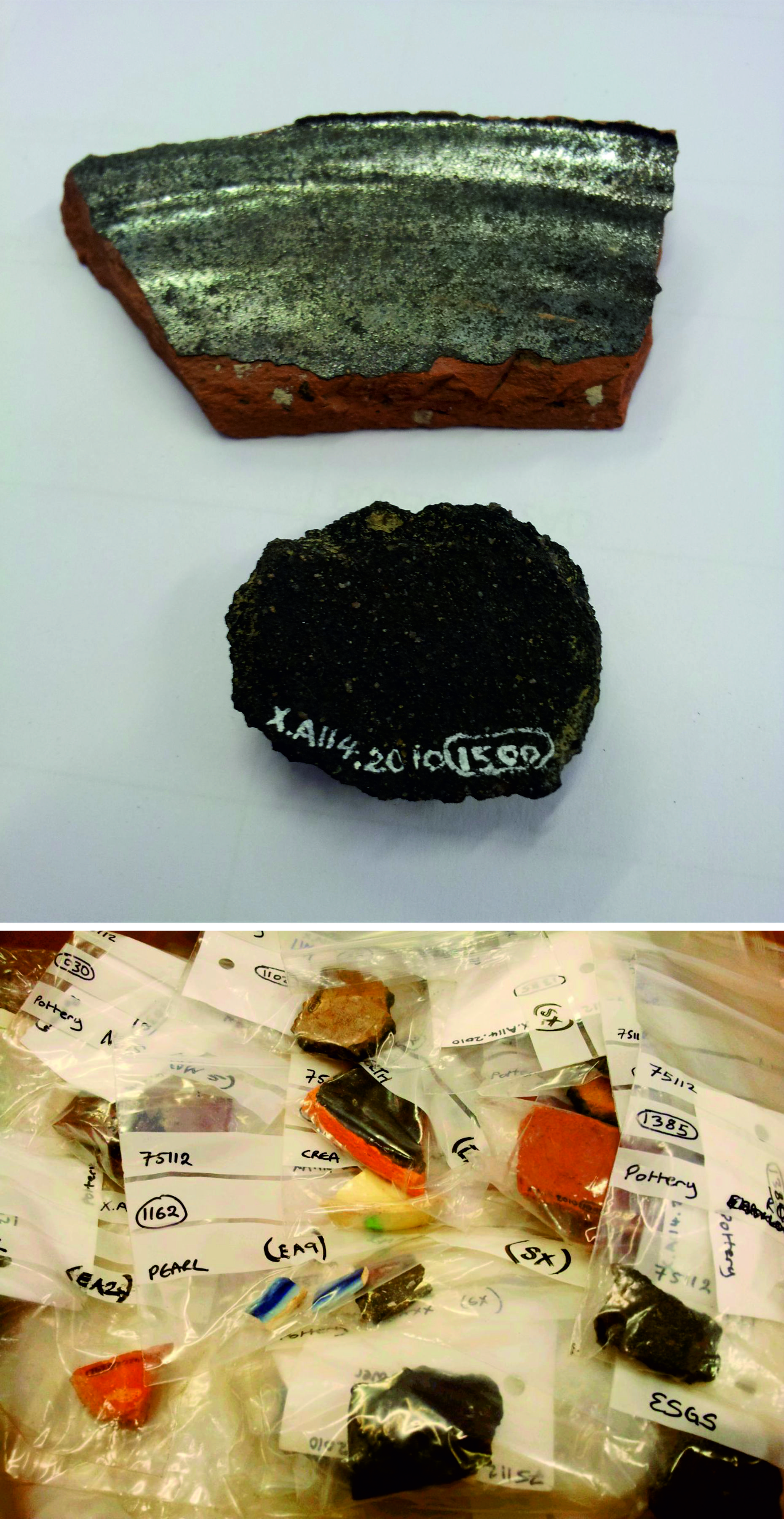Getting to know your CHARN from your BERTH

How often have you picked up a broken piece of pottery and thought nothing of its history or context? Unless you have a trained eye for that sort of thing the chances are…not much. Normally it’s the shiny or gruesome things that attract the layman or the media but I think fresh appreciation should be awarded to those sherds and orangey broken pieces.
The finds we’re depositing will end up in Leicestershire Museums so each find has been marked in accordance to their set of requirements. This means that on any one of the bags of pottery I can find something along the lines of ‘BERTH (EA2)’ or ‘CHARN (SX)’ or a myriad of other perplexing combinations, but what does this mean? Essentially its museum generated short hand for what type of pottery it is; BERTH is Brown glazed earthenware whereas CHARN is Charnwood ware.
Look at the two sherds – which one looks more “important” to you? Perhaps the top one with its shiny glaze and distinct shape? The top one is Brown glazed earthenware with a date range of AD 1550–1800, but the bottom one, the Charnwood ware, is dated to AD 450–800. With more context about the date and the age of the sherds you may have reviewed your preferred object – I certainly did! So the next time you’re faced with a pottery sherd, dull and weathered by time and earth, or a shinier piece, don’t discard the duller one on aesthetics alone as who knows, it could have been around longer than you had imagined!
By Emma Carter